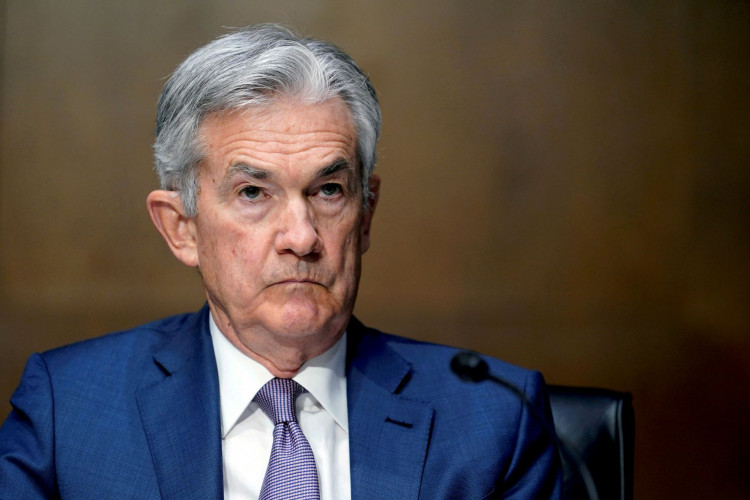The U.S. Bureau of Labor Statistics recently reported a significant cooling in the U.S. Consumer Price Index (CPI) for October, with the core CPI dropping to its lowest point in over two years.
This news spurred a notable rise in U.S. stock indices at Tuesday's close, with the S&P 500 up 1.91%, the Dow Jones increasing by 1.43%, and the Nasdaq climbing 2.37%.
Market Expectations and Bond Yields
There's a growing market sentiment that U.S. interest rates have peaked, as evidenced by a collective decline in U.S. bond yields. The yield on the 10-year Treasury note fell to 4.4320%, the lowest in eight weeks, while the 2-year note saw its largest single-day drop since May 4, reaching 4.8318%.
October CPI Analysis
According to the Bureau's data from November 14, the October CPI remained unchanged from the previous month, marking the first time in over a year that it didn't increase month-over-month. This was below the market's expectation of a 0.1% rise. The year-over-year increase was 3.2%, lower than expected and below September's 3.7%.
The core CPI, which excludes the often volatile food and energy sectors, rose by 0.2% month-over-month, less than the anticipated 0.3%, and increased by 4.0% year-over-year, the smallest gain in over two years.
The energy index in October decreased by 2.5% month-over-month, with gasoline dropping by 5.0% and fuel oil by 0.8%. Year-over-year, the energy index fell by 4.5%, gasoline by 5.3%, and fuel oil by 21.4%.
Economists' Perspectives
Bill Adams, Chief Economist at U.S. United Bank, interpreted the October data as a sign of cooling inflation in the U.S. He noted that increased oil production led to lower gasoline prices, rising mortgage rates cooled housing prices, and more housing completions gradually increased rents.
The return of a significant number of workers to their jobs has eased the labor shortage, curbing wage increases and, consequently, reducing pressure on businesses to raise prices further. Earlier this month, the Bureau reported a 0.2% increase in average hourly earnings for October, below expectations, and the unemployment rate rose from 3.8% to 3.9%.
Fed's Interest Rate Policy
Following the release of the October CPI data, many analysts and investors believe that the Federal Reserve's cycle of interest rate hikes has ended. Since March last year to July this year, the Fed has raised rates 11 times, totaling over 525 basis points, bringing the federal funds rate target range to 5.25% to 5.50%.
A survey published by Bank of America Global Research on Tuesday showed that 76% of fund managers surveyed believe the Fed has ended its cycle of rate hikes, up from 60% in the previous survey.
Nick Timiraos, a journalist often referred to as the "Fed's mouthpiece," suggested on the X platform that the wage and inflation data from October "strongly indicate" that the Fed's last rate hike was in July. David Mericle, Chief U.S. Analyst at Goldman Sachs Group, also believes the most challenging part of the inflation battle is over.
Some institutions are now predicting when the Fed will start cutting rates. UBS Investment Bank's latest forecast suggests the Fed could begin reducing rates as early as March next year, with a total reduction of 275 basis points throughout the year.
Despite the U.S. economy's resilience this year, risks that existed this year are expected to reemerge next year. Measures taken by the U.S. against inflation and rising unemployment rates are likely to impact economic output next year, with a recession anticipated in the second quarter.
Cautious Views on Ending Rate Hikes
However, some analysts remain cautious about the Fed ending its rate hike cycle. Federal Reserve Chair Jerome Powell, speaking at an International Monetary Fund meeting last week, noted that inflation had previously made "false moves," declining for a while before climbing again.
Powell reiterated the Fed's commitment to bringing inflation down to 2% and stated, "We are not confident we have achieved that goal." He affirmed that the Fed would not hesitate to tighten policy further if necessary.
Jamie Dimon, CEO of JPMorgan Chase Group, echoed a similar sentiment, expressing concern that inflation might not dissipate quickly and that the Fed might need to continue taking measures.
Brian Rose, an economist at UBS Global Wealth Management, believes that with inflation still above the Fed's target and the labor market remaining tight, the Fed cannot declare an end to the rate hike cycle. He predicts that unless data suddenly weakens, it could take at least another three months for the Fed to announce the end of its rate hike cycle.
Jamie Cox, Managing Partner at Harris Financial Group, highlighted the key issue: whether the Fed continues to believe that slowing the economy into a recession is the way to thoroughly defeat inflation.






